- Clinical Technology
- Adult Immunization
- Hepatology
- Pediatric Immunization
- Screening
- Psychiatry
- Allergy
- Women's Health
- Cardiology
- Pediatrics
- Dermatology
- Endocrinology
- Pain Management
- Gastroenterology
- Infectious Disease
- Obesity Medicine
- Rheumatology
- Nephrology
- Neurology
- Pulmonology
Conjunctivitis, Iritis, Fused Lids, and More: Photo Essay of Eye Disorders
Conjunctivitis, iritis, ocular vaccinia, herpes zoster ophthalmicus-a few of the conditions for which patients seek treatment every day.
This patient’s conjunctivitis was a consequence of Reiter syndrome-a triad of arthritis, conjunctivitis, and urinary tract infection or urethritis. The disease usually begins in a region of an existing bacterial infection, such as an infection caused by Chlamydia trachomatis.
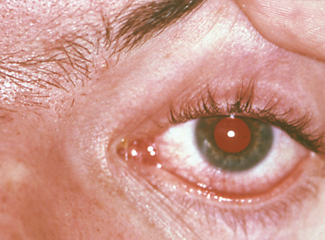
Photograph courtesy of Joe Miller and the Centers for Disease Control and Prevention.
This young patient has acute bacterial conjunctivitis. Bacterial infections are the most common cause of conjunctivitis in children. The most frequent causative pathogens are Haemophilus influenzae and Streptococcus pneumoniae.
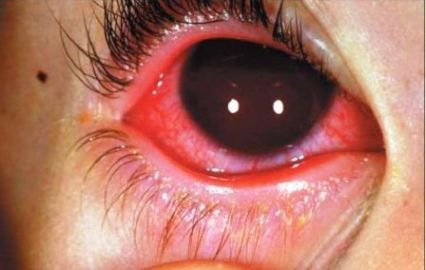
Photo courtesy of Deepak Kamat, MD
Limbal flush-intense injection in the bulbar conjunctiva-is a distinguishing characteristic of iritis, seen here. In this case the underlying cause was neurosyphilis.
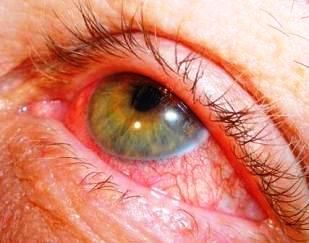
Photo courtesy of Brady Pregerson , MD.
Trimethoprim ophthalmic ointment was applied to this child's fused left eyelids-the result of an errant splash of "super glue." After occlusion for 24 hours with an eye patch, the lids remained fused but were separated using gentle traction with a lacrimal dilator. Recovery was full without sequelae.
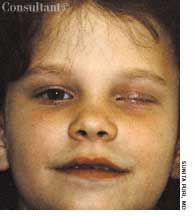
Photo courtesy of Sunita Puri, MD
Ocular vaccinia results from the transfer of vaccinia virus from a vaccination site or other lesion containing the virus to the eye or spot close to the eye.
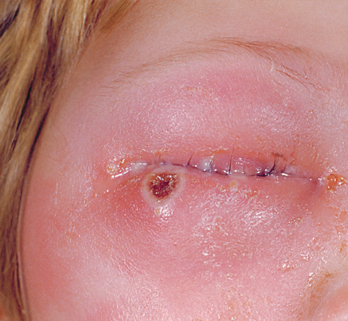
Photograph courtesy of Allen W. Mathies, MD, John Leedom, MD, and the Centers for Disease Control and Prevention.
These crusted lesions and skin erythema follow the distribution of the ophthalmic, or first division of the trigeminal (fifth cranial), nerve and are manifestations of acute herpes zoster ophthalmicus. The ophthalmic infection accounts for 10% to 25% of all cases of herpes zoster.
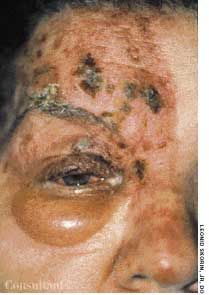
Photo courtesy of Leonid Skorin, Jr, DO.
